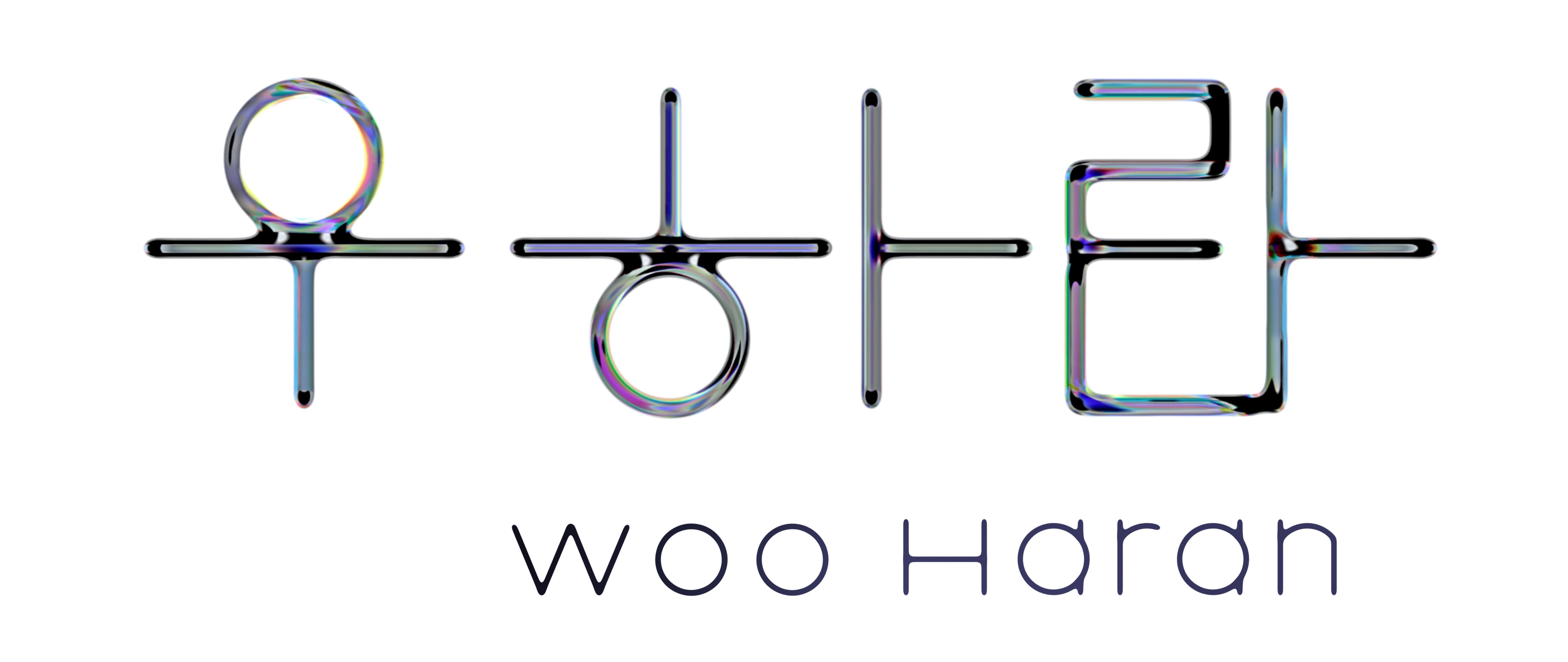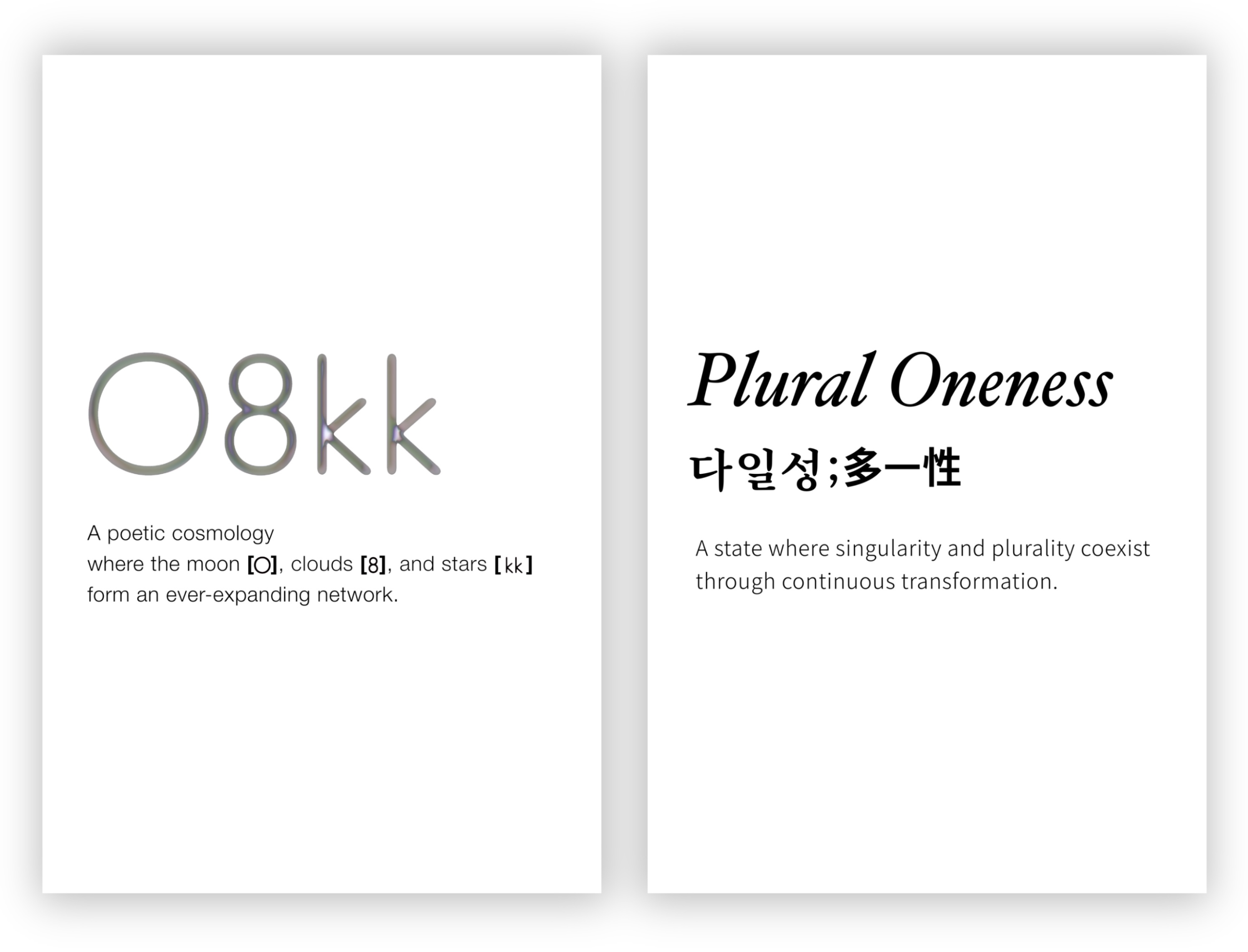

Woo Haran (b. 2000, South Korea) is a composer and visual artist based in Seoul. Woo's creative works unfold within [O8kk], a poetic cosmology—where Moon [O], Clouds [8], and Stars [kk] form an ever-evolving network. In this conceptual universe, Woo explores what can be described as Plural Oneness(다일성;多一性)—a state where singularity and plurality coexist in continuous transformation.
Woo holds BFA in music composition from the California Institute of the Arts (CalArts) under mentors Michael Pisaro, Ulrich Krieger, and Karen Tanaka, developing a multidisciplinary approach that bridges sound, image, and performance.
In 2021, Woo was named National Second Winner by the Music Teachers’ National Association (MTNA) in the United States for a solo piano composition incorporating Korean folk music. In 2024, he received the Special Prize at the Arte Laguna Prize in Venice, Italy for a video art that explores the fluid relationship between nature and digital structure.
Woo's works have been presented at experimental and digital art platforms including Radiophrenia Glasgow, the London Experimental Film Festival, Athens Digital Arts Festival, Music For Your Inbox in Los Angeles, GUI/GOOEY in New York City, and the Arte Laguna Prize. Drawing from both musical and visual traditions, Woo's works often merge composition and symbolic imagery into dreamlike, nonlinear narratives.
With a vision to create works that stand alone yet interconnect as part of a larger, evolving narrative, Woo invites audiences into a universe where diverse media come together to tell stories.